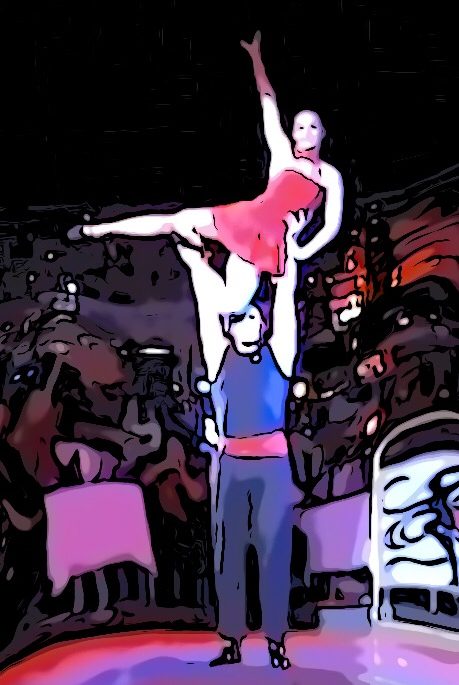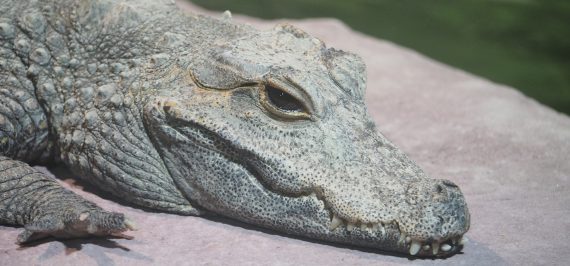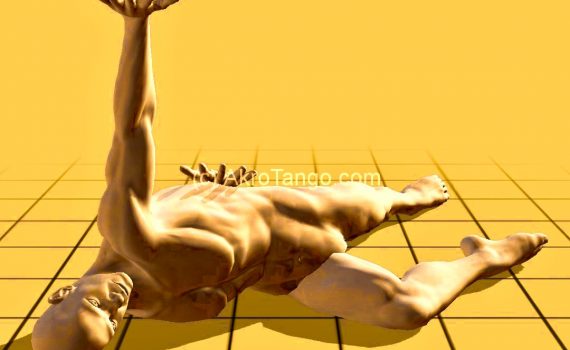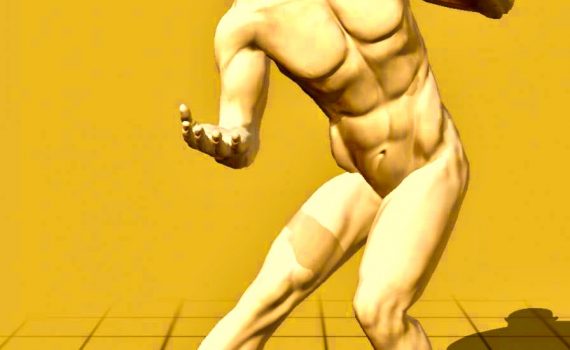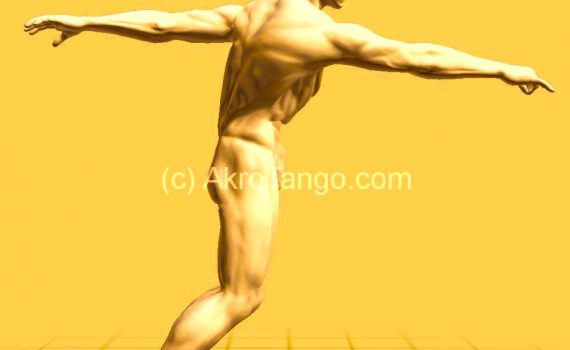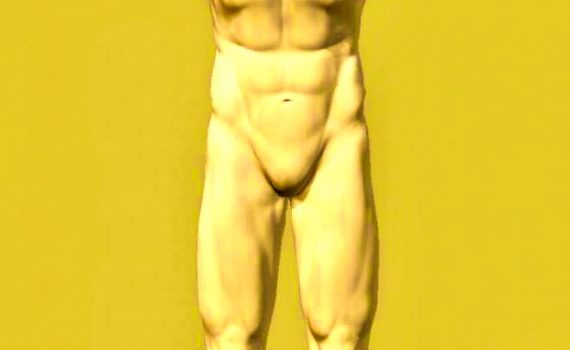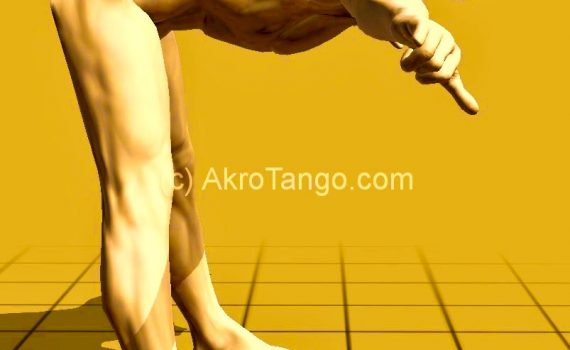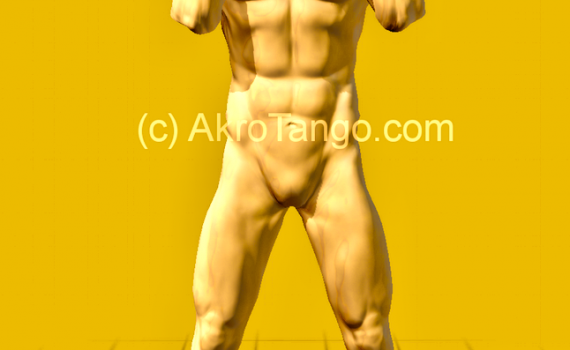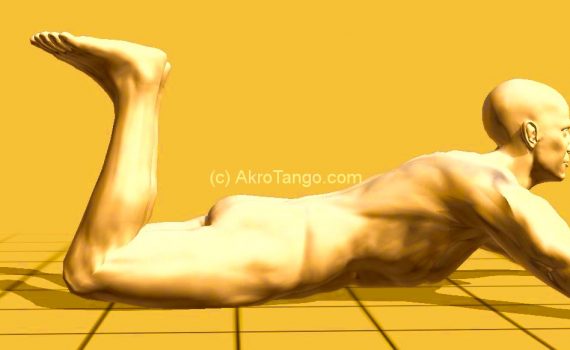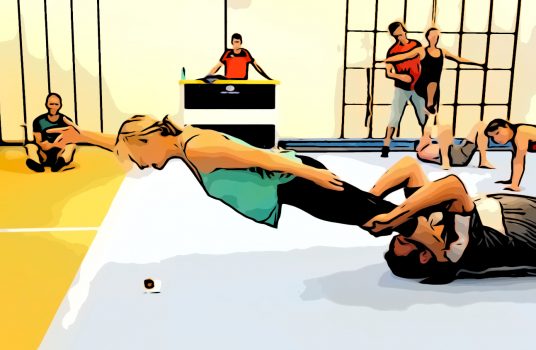Lying on your belly, like a crocodile, or rolling over on the side may be aesthetically pleasing at a slender base. I always feel like a walrus, which is why I usually press myself against this position … Presumably, only the one-armed abdomen pilot of the flyer (→ crocodile) is similarly uncomfortable. Due to the fact that the base does not see the flyer well, the entry-level of this position is not for beginners! Here is a video from StreetsUnited, which shows from 3:40, which possibilities this position could offer …
Kategorie: yellow
A position with considerable risk, as the base does not see the flyer → Safety. For tricks like the Chinese roll (= spring roll, ..) I advise the base to wear a long T-shirt to prevent a mat burn on the elbows. This lateral position is neither easy to reach for the flyer nor the base. The base must stabilize the lower arm at the back of his back and the wrist should not become flatten when loaded. If necessary, he may also shore up the wrist on the back. For the flyer, the differently long arms of the base […]
Priority of the base is always the maximum stability. A stable balance is clearly visible because of the straight line of force. Just like a stalagmite in the salt grotto merges with the stalactite to form a pillar, base and flyer form a stable pillar in balance. If this line is not correct, the viewer is more likely to get the impression of a medium strong earthquake. Balancing the flyer with the hands while standing is one of the most important basic skills for partner acrobatics. In fact, the possibilities are limited more by the imagination of acrobats than by […]
There are 2 possible positions for the balance on the forearms: 1. Over the head Balancing above the head is similar for the base as the lower arm stand of the flyer. The balancing should work well first while lying down, before a couple dares into this position! In principle, the base may balancing on the forearms all positions of the flyer with 2 contacts. Only the entrance to the position limits the variations. For instance the standing flyer reaches the forearms only from the shoulder. This entrance requires expert level and looks like nothing special. Nevertheless, it certainly makes a […]
In this position, only forms of libra are possible. Pushing point is always the lower leg and pulling point can be the arm or the shoulder of the base. The average mobility of the shoulder in the back area upwards is limited. The base may compensate this somewhat by leaning more forward and / or only reach backwards with one arm. The flyer is here behind the base, so the base does not see the flyer and has to balance him without visual contact. Possible positions of the flyer: standing (chair) standing flag backwards standing (figurehead) handstand flag It can […]
The shoulder in the acrobatics extends from the neck to about (depending on the power of the base) to the middle of the upper arms, so room enough for several flyers! And that on both sides of the head. The shoulder is (unlike the hip) a floating joint, which means that it has no firm connection with the trunk skeleton. When the base pulls the shoulder to the neck, there is hardly any room left for one flyer. The most important ability of the base in this position is therefore to raise the upper arm without pulling the shoulder to […]
The center of gravity of the base, even if he is bowed far forward, is above his feet. The back is as straight as possible, with a slightly higher shoulder than the hip. The flyer will be balanced behind the base and thus without visual contact. In the balance (without the help of the hands), the base should imagine a large ball on his back, which he wants to prevent from rolling down. It must be avoided at all costs that the floor of the flyer will literally be pulled away from under his feet. Lying or sitting flyers are […]
The base holds his hands approximately shoulder width, as he would turn the hands of the flyer inwards when positioning more narrow. The palm is open so that the flyer has the largest possible space available. The thumbs are as close as possible to each other. The wrist is located above the upper arm and must never come before the elbows. The lower arms are aligned in the direction of the center of gravity of the flyer to ensure good stability against shear forces. The position “Base standing, short arm” is an important starting position for dynamic tricks in duo-acrobatics […]
Maximum stability in this position would be if the heels are pulled all the way to the po, but then the angle of the feet is no longer suitable for the balance. It is important to find a good compromise. The back is always under tension … no position for having a rest. The possibilities in this position are very limited, since even small shearing forces mean the end of the trick. The base can not help in case of a crash. It makes sense to initially balance in this position only a lying flyer. This position looks very nice […]
There are 2 contact points within the libra. One is on pressure, the other one is pulling. So pretty much any position is possible where base and flyers can get hooked with hand or foot. The flyer will not kept in the center of gravity and balanced. The pressure-contact point is mechanically seen an axis of rotation, via which the flyer is held in the air by means of a lever. The resulting shear forces are desirable and necessary, but should remain smooth! The weight of the flyer must be balanced with a corresponding counterweight from the base via this […]
